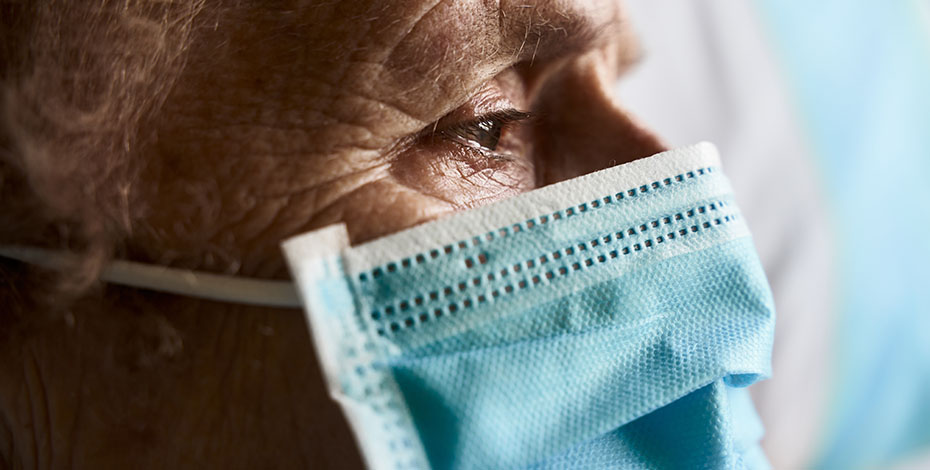
5 Facts About Older Australians and COVID-19

Caitlin McDonald APAM, Joanna-lee Tan APAM MACP, Shiva Gopalan APAM and Hannah Sharma APAM of the APA Gerontology national group present five discussion points about the significant impact of the pandemic on older Australians and the role of physiotherapists in supporting those infected with COVID and/or affected by the isolation of restrictions.
1. Older adults are more severely affected by COVID-19 infection
COVID infection is more severe in older people, with increased vulnerability to illness and death.
Age has been shown to be an independent risk factor for adverse outcomes post-infection.
This may be partly attributed to multimorbidity and pre-existing health conditions.
COVID infection can result in accelerated deterioration of physical and cognitive function, especially in the presence of dementia or Parkinson’s disease (Mueller et al 2020).
Older adults are more likely to have severe complications of COVID infection such as pneumonia, sepsis, acute respiratory distress syndrome, pulmonary fibrosis and respiratory and kidney failure.
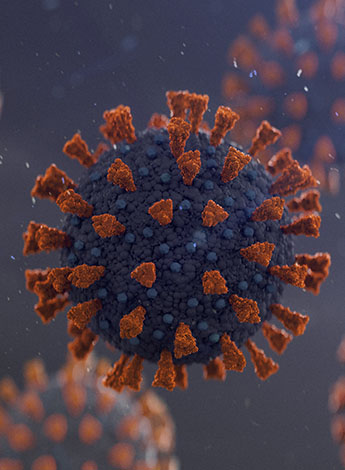
The ageing immune system allows the virus to replicate rapidly, resulting in more infected cells and high inflammatory responses.
Viral components enter the bloodstream and fluid fills the alveoli, reducing lung capacity as well as infecting other organs.
In severe cases, the ‘cytokine storm’ results in microvascular thrombosis, leading tohypoxia, coagulopathy and organ failure.
Outcomes for older people infected with COVID include decreased capacity and increased likelihood of chronic disease (Mueller et al 2020).
In 2020–2021, older adults comprised 33 per cent of hospitalisations due to a COVID-related diagnosis (Australian Institute of Health and Welfare 2021).
Physiotherapists play an important role in maximising functional independence and assisting with recovery from COVID (Daynes et al 2021).
2. Flexible service delivery helped older adults remain active and healthy in lockdown
The imposed restrictions of the pandemic, including workforce and health service disruptions, reduced access to physiotherapy and rehabilitation services for many people.
Flexible service delivery models were essential for older adult rehabilitation and for creating opportunities for older adults to remain physically active and healthy during lockdowns.
There was a steady increase in telehealth use by older adults, despite the barriers experienced in this demographic (Kalicki et al 2021).
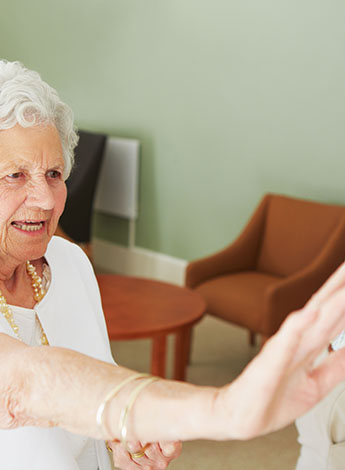
Physiotherapists adapted quickly to providing virtual consultations funded by private health insurance and Medicare and via hospital and community programs.
Physiotherapists also prescribed and monitored adherence to exercise by adapting their practices.
The Safe Exercise at Home website was created by a group of physiotherapists to encourage older adults to maintain their physical activity (safeexerciseathome.org.au).
In residential care, clinicians offered doorway or window visitation, provided self-directed programs and worked with care staff to maximise activity levels.
Within hospitals, physiotherapists used videoconferencing to encourage engagement in rehabilitation.
Reduced primary services, limited access to specialist clinics and restrictions on elective surgery highlighted the role of physiotherapy in the holistic management of chronic disease.
Physiotherapists promoted conservative management approaches, using wearable technology and mobile apps to remotely monitor adherence to programs.
To circumvent reduced access to community services, physiotherapists collaborated with community organisations and volunteer programs for community outreach.
3. Technology-based interventions challenge but ultimately empower older adults
Many older adults have difficulty using technology, which creates several challenges for physiotherapists.
An older person may have difficulties with hearing, vision and cognition, resulting in a reduced ability to effectively carry out interventions communicated by clinicians through telehealth (Kruse et al 2020).
Clients may struggle to connect online to virtual appointments, reducing available time for consultation.

Despite these barriers, the literature suggests that with training and practice, telehealth use leads to increased autonomy, reduced stress and increased cognitive ability for older adults (Kruse
et al 2020).
Physiotherapists have assisted with the uptake of telehealth in a number of ways:
- providing training and virtual support for older adults who are learning to use mobile apps and videoconferencing services
- assessing older adults’ technology needs, pre-planning sessions and providing recommendations on devices or software suitable for individual needs (Thomas et al 2022)
- troubleshooting with clients when technology or mobile apps do not work optimally
- adapting home-based activity programs so they can be done safely, including supporting clients’ household members, care staff and family to provide supervision and motivation
- working with software developers to create user-friendly interfaces for older people.
4. Physiotherapy interventions for older Australians were adapted to improve mental, social and psychological wellbeing
Contrary to popular belief, a number of older Australians managed well during the pandemic.
Previous experience with life-changing events and dealing with loss and isolation may be a contributing factor.
However, reduced access to regular forms of exercise detrimentally affected physical and mental health (Armitage & Nellums 2020).
In 2020–2021, older adults had less than weekly contact with family or significant others.
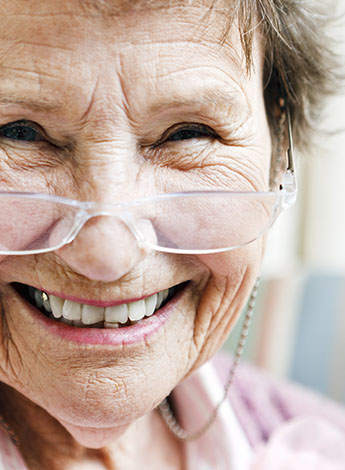
They were also the largest group to show a decline in employment levels (Australian Institute of Health and Welfare 2021).
Physiotherapists have been consciously incorporating lifestyle components and World Health Organization recommendations about supporting older people into their treatment for emotional and social wellbeing:
- holistic prescription—taking into account the environmental, technological and social support mechanisms available. Working in multidisciplinary teams to tailor goal setting and individualised programs with consideration of daily routines (Kuldeep et al 2020)
- social opportunities—actively grouping people with similar interests together for group exercise programs. Social prescribing became a part of standard healthcare
- broadening of scope—addressing cognitive and emotional factors. Physiotherapists incorporated games, trivia and brainteasers into sessions as well as individually tailored music or dance.
5. Physiotherapists play an important role in managing long COVID in older Australians
Long COVID is the prolonged recovery period experienced by some people after contracting COVID.
Symptoms may include fatigue, muscle and joint pain, headaches and difficulty concentrating.
In older people, these symptoms can be more severe due to ageing structures and possible comorbidities, leading to a reduction in functional ability.
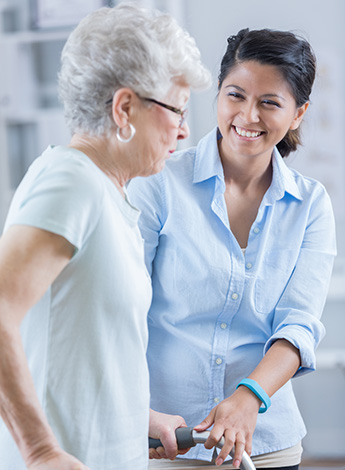
Symptoms of long COVID might be difficult to distinguish from those perceived to be due to ageing, particularly in people with pre-existing comorbidities or side effects from polypharmacy.
Long COVID appears to be more likely in women, older people, people with a higher body mass index and those with more than five symptoms in the first week (Mansell et al 2022).
Early multidisciplinary assessment and management to mitigate the effects of COVID on older people by addressing physical, psychological and functional sequelae is recommended to improve health and quality of life.
Rehabilitation programs for long COVID combine progressive exercise and education.
Physiotherapists can draw on their full scope of practice—including strength and cardiovascular fitness programs, pulmonary rehabilitation, pain management techniques, education, advice and pacing strategies—to help patients recovering from long COVID to manage symptoms, maintain overall health and avoid falls.
- References
-
Armitage R, Nellums L. COVID-19 and the consequences of isolating the elderly. The Lancet Vol 5 Issue 5E256, May 2020 https://doi.org/10.1016/S2468-2667(20)30061-X
Daynes E, Gerlis C, Chaplin E, Gardiner N, Singh SJ. Early experiences of rehabilitation for individuals post-COVID to improve fatigue, breathlessness, exercise capacity and cognition—a cohort study. Chron Respir Dis 2021; 18: 14799731211015691
Dhama Kuldeep, Patel Shailesh Kumar, Kumar Rakesh, Rana Jigyasa, Yatoo Mohd. Iqbal, Kumar Akshay, Tiwari Ruchi, Dhama Jaideep, Natesan Senthilkumar, Singh Rajendra, Harapan Harapan. Geriatric Population During the COVID-19 Pandemic: Problems, Considerations, Exigencies, and Beyond.Frontiers in Public Health, VOL 8, 2020 URL=https://www.frontiersin.org/articles/10.3389/fpubh.2020.574198 DOI=10.3389/fpubh.2020.574198
Victoria Mansell, Sally Hall Dykgraaf, Michael Kidd, Felicity Goodyear-Smith, Long COVID and older people,The Lancet Healthy Longevity,Volume 3, Issue 12,2022,Pages e849-e854,ISSN 2666-7568,https://doi.org/10.1016/S2666-7568(22)00245-8.
Kalicki, A. V., Moody, K. A., Franzosa, E., Gliatto, P. M., & Ornestein, K., A. (2021). Barriers to telehealth access among homebound older adults. Journal of the American Geriatrics Society, 69(9), 2404-2411. https://doi.org/10.1111/jgs.17163
Kruse, C., Fohn, J., Wilson, N., Patlan, E., N., Zipp, S., & Mileski, M. (2020). Utilization Barriers and Medical Outcomes Commensurate With the Use of Telehealth Among Older Adults: Systematic Review. JMIR Medical Informatics. 8(8). https://doi.org/10.2196/20359
Mueller AL, McNamara MS, Sinclair DA. Why does COVID-19 disproportionately affect older people? Aging (Albany NY). 2020 May 29;12(10):9959-9981. doi: 10.18632/aging.103344. Epub 2020 May 29. PMID: 32470948; PMCID: PMC7288963.
Santesmasses D, Castro JP, Zenin AA, Shindyapina AV, Gerashchenko MV, Zhang B, Kerepesi C, Yim SH, Fedichev PO, Gladyshev VN. COVID-19 is an emergent disease of aging. Aging Cell. 2020 Oct;19(10):e13230. doi: 10.1111/acel.13230. Epub 2020 Oct 1. PMID: 33006233; PMCID: PMC7576244.COVID-19 is an emergent disease of aging
Thomas, E. E., Taylor, M. L., Ward, E. C., Hwang, R., Cook, R., Ross, J-A., Webb, C., Harris, M., Hartley, C., Carswell, P., Burns, C. L., & Caffery, L. J. (2022). Beyond forced telehealth adoption: A framework to sustain telehealth among allied health services. Journal of telemedicine and telecare.(0)0. 1–11. https://doi.org/10.1177/1357633X221074499
Australian Institute of Health and Welfare. (2021). The first year of COVID-19 in Australia: direct and indirect health effects. Canberra: AIHW
Haines, K. J., & Berney, S. (2020). Physiotherapists during COVID-19: usual business, in unusual times. Journal of physiotherapy, 66(2), 67–69. https://doi.org/10.1016/j.jphys.2020.03.012
Safe exercise at home: https://www.safeexerciseathome.org.au/
WHO recommendations: Older people and covid-19. https://www.who.int/teams/social-determinants-of-health/demographic-change-and-healthy-ageing/covid-19
APA | Long COVID submission recommends multidisciplinary teams for better care (australian.physio) -
© Copyright 2024 by Australian Physiotherapy Association. All rights reserved.





